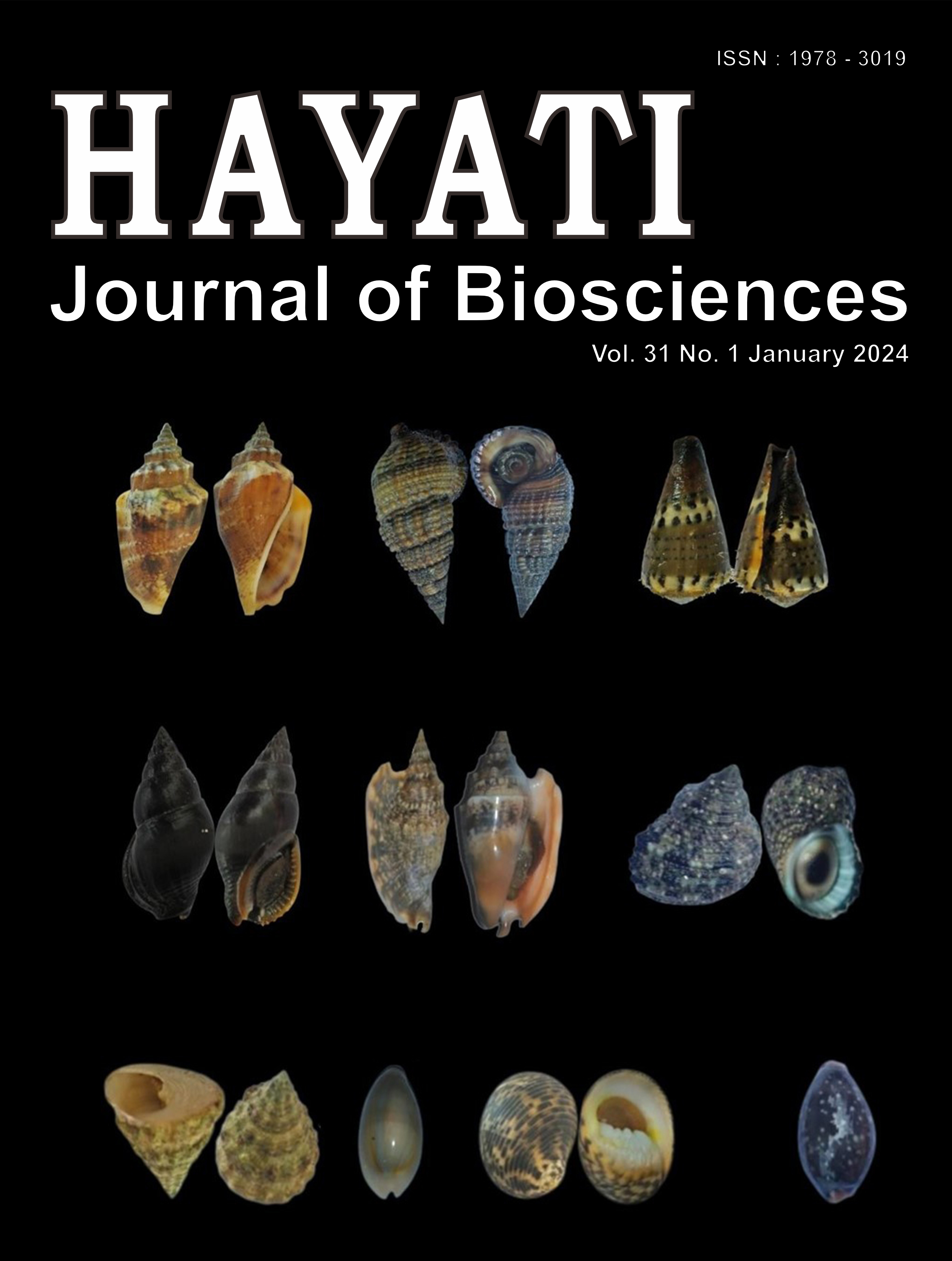Antimicrobial Potential of an Actinomycete Gordonia terrae JSN1.9-Derived Orange Pigment Extract
Abstract
Actinomycetes are known to be a source of natural products and drugs. Gordonia terrae, an actinomycete pigment producer, shows potential in producing pigment with antimicrobial activity. This study aims to determine the antimicrobial activity of the active pigment fraction produced by the actinomycete G. terrae, assess the effects of the active pigment fraction on microbial cells, and identify the types of compounds present in the fraction. The pigment extract exhibited antimicrobial activity against Gram-positive bacteria and fungi. Specifically, it showed activity against Bacillus subtilis ATCC 6633, Staphylococcus aureus ATCC 25293, and Candida albicans ATCC 10231. Furthermore, the study evaluated the antimicrobial activities of the active fractions, revealed the active fraction had better antimicrobial activity than the crude extract. Scanning electron microscopy (SEM) confirmed that the active fraction of the pigment causes damage to B. subtilis ATCC 6633 cells, inhibits the formation of filaments in C. albicans ATCC 10231, and alters the normal shape of the cells. LC-MS/MS results showed that the active fraction contained several compounds known for their antimicrobial activity. Among the dominant compounds identified were cholestyramine, aminopregnane, and sphinganine. Thus, this study demonstrated that the orange pigment extract derived from G. terrae JSN1.9 exhibits promising antimicrobial activity.
Downloads
Copyright (c) 2023 Siti Sholekha, Sri Budiarti, Akhmad Endang Zainal Hasan, Ni Putu Ratna Ayu Krishanti, Aris Tri Wahyudi

This work is licensed under a Creative Commons Attribution-NonCommercial 4.0 International License.
HAYATI J Biosci is an open access journal and the article's license is CC-BY-NC. This license lets others distribute, remix, tweak, and build upon author's work, as long as they credit the original creation. Authors retain copyright and grant the journal/publisher non exclusive publishing rights with the work simultaneously licensed under a https://creativecommons.org/

























.png) IPB University
IPB University Department of Biology
Department of Biology The Indonesian Biological Society
The Indonesian Biological Society 

